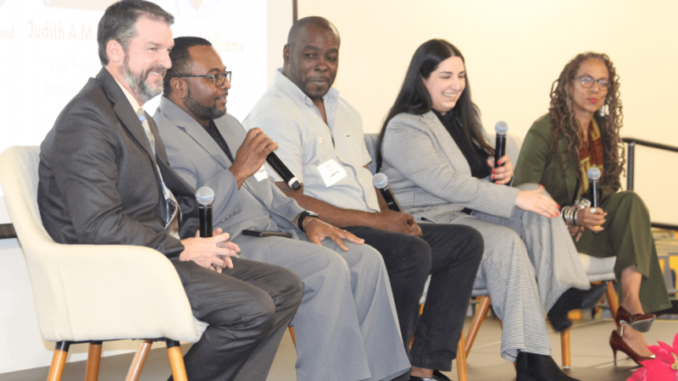
BY FRANK DROUZAS | Staff Writer | ST. PETERSBURG — www.theweeklychallenger.com – Re-entering society after incarceration is an uphill battle for most, fraught with intimidating challenges. An expert panel discussed the issues surrounding re-entry and the criminal justice system at the Center for Health Equity on Dec. 12.
Criminology Professor Danielle Thomas, University of South Florida, noted that those who have paid their debt to society are already labeled, so they’re “coming out beneath everybody else” when seeking to re-enter the workforce.
“So, to try to elevate themselves that much more, they have to seem like they fit in with society,” she said, “that they’re educated on the resources of what’s going on.”
She said it starts with the individual, and education and motivation are essential.
“You have to be educated and motivated the day you’re sentenced and start working on yourself,” Thomas asserted.
Stetson University Law Professor Judith Scully pointed out that we need education in the community as well because if the community doesn’t change its perspective on what it means to have returning citizens, then we’re not going to dismantle the existing barriers.
The Community Re-Entry Experience event was hosted by City Councilmember Bro. John Muhammad, Horizon Communities, PERC, The CDAT Center, Inc. and The Pinellas County Urban League.
“A lot of the education needs to be in the community of people who have never been incarcerated,” she explained. “You have to understand that when people are incarcerated, they are isolated … we need to have conversations about that as well. What does that mean? What does that do to the human spirit? We don’t have those kinds of conversations.”
St. Petersburg City Councilmember Bro. John Muhammad said housing is another issue for those re-entering, and there are barriers such as background checks and screenings. Often, such individuals must first find housing through social services or stay with a relative, which puts some in precarious positions.
“One of the brothers told me: ‘Man, I’ve got to hurry up and get myself together because I’m one argument away from being homeless!’”
Financial responsibilities, such as probation fees and lack of recent rental history, can hinder someone looking for housing. Individuals incarcerated at a young age likely have no rental history at all, which can be a disqualifier. Furthermore, some places will simply turn away anyone who has a felony conviction or record, Muhammad said, as a matter of policy.
“Even when you ban the box,” he said, referring to the elimination of criminal history questions on job applications, “it basically stalls out the process, and you can’t legislate compassion, you can’t legislate empathy, you can’t legislate a perspective.”
There are institutional practices, he pointed out, that need to change. Educating landlords is crucial, as they should be aware of a returning citizen’s experience so they can make decisions based on the human being’s merit and not solely upon the information on an application. Education of self is just as crucial.
“The people who I’ve seen who successfully in re-entry are people who have been educated and are knowledgeable about who they really are,” the councilman said, “and having a knowledge of yourself, a knowledge of the time, a knowledge of the circumstances, a knowledge of the realities of society — and a knowledge of the game and the way it’s rigged against us.”
After the panel discussion, participants experienced a unique re-entry simulation that provided profound insights into the challenges faced by individuals striving for self-sufficiency after incarceration.
Muhammad said returning citizens must assess themselves and determine what transferable skills they can use. He said even if they’ve never had a job and were doing anything in the streets with any degree of success, they have some transferable skills that can be applied to something legitimate.
Anthony Williams is a business owner and returning citizen. He noted that some returning citizens lack basic education — some are even illiterate — and will not be a good fit for just any program but should be given an opportunity to develop their own skills, whatever they may be.
He cited his cousin, a functioning illiterate, who works successfully with an electrician. His employer taught him everything he needed to know.
“I asked him, ‘How do you know what to do?’ He said, ‘I just see what supplies they brought for the day.’ He’s using his game.”
Patrick Mohoney, director of the Office of Programs & Re-Entry Florida Department of Corrections, said that the average literacy rate of those incarcerated in the Florida Department of Corrections is less than a sixth-grade level.
“About 55 percent of our population need academic programming,” he said, “meaning they’re either illiterate or they don’t have a high school diploma or a G.E.D. Another 50 or so percent don’t have any workforce skills.”
A formerly incarcerated person is five times more likely to be unemployed than someone in the general public; yet, if returning citizens can acquire correctional education, be it academic or technical, they’re almost 15 percent less likely to recidivate, he said.
About 60 percent of the population have a substance use treatment need, meaning six out of every 10, if you walk the compound, have significant treatment need, Mohoney added, noting the complexity of re-entry.
We can’t forget those on community supervision, Mohoney pointed out, adding that there are over 85,000 individuals in prison in Florida and over 140,000 on some form of felony supervision.
“The needs of that population are just as great as the needs of the individuals incarcerated,” he said. “And they’re amongst us, they’re in our communities.”
Participants encountered obstacles that could lead to feelings of helplessness and reduced self-confidence, mirroring the real-life struggles of those rebuilding their lives post-incarceration.
Women face an additional challenge as well. The female population in the Department of Corrections is just under 10 percent, Mohoney said, and in the case of a mother giving birth while incarcerated, she is allowed to care for the child for a short period of time. Then, the child is typically placed with a family member while she remains locked up.
Florida’s rate of recidivism is about 25 percent. Thomas said to urge lawmakers to effect any significant legislative changes by approaching them with evidence-based research and presenting effective programs, along with “attending re-entry and community events that you know will have legislators and politicians there, because you can start the conversation informally.”
Unfortunately, Scully said, economics figures into many state-level decisions, and the main question for legislators is: “What is the cost of changing this policy?” This makes community re-entry agencies and programs all the more critical.
“What are we doing individually in the community, in the agencies that we’re working in, in the realms that we are operating in, what are we doing to help make things better?” she said. “Because if we’re waiting on legislative change, we could be waiting for a really long time.”
There are examples of success stories, Scully pointed out, like the Missouri model, which shows a much lower rate of recidivism for juveniles than anywhere else in the nation. There, she explained, they don’t actually “incarcerate kids in cages.” Many of them are in homes run by the state, a “kinder, gentler form of incarceration,” she added.
The children still attend school and are under adult supervision in these homes, and the child and their families receive therapy. There are foundations supporting the teachings of this model to other states, but most states have not adopted the model in full.
“It’s a huge difference when we actually look at individuals as individuals,” Scully said, adding that recidivism in some states approaches 80 percent but is about 10 percent in Missouri.
To underscore the challenges returning citizens face, there was a re-entry simulation complete with packets with a profile and a life card representing a fictional person’s biography after imprisonment.
The interactive simulation, facilitated by Stephanie Perry, assistant regional director of the Florida Department of Corrections, was meticulously designed to shed light on the journey toward self-sufficiency.
Florida Department of Corrections Regional 3 Assistant Regional Director Stephanie Perry walked participants through four 15-minute sessions, each representing a week in the life of a returned citizen. Tasks included securing transportation, reporting to your probation officer, attending counseling or drug treatment, buying food, being drug tested, going to work, paying rent, securing a driver’s license and more.
“Statistics say, when somebody is released, that first 30 days is critical,” said Perry. “That’s where if they do not get the resources plugged in and connected, they can end up, unfortunately, back in the system.”
After each week, Perry listened to the challenges and concerns of simulator participants. Many complained about the lack of transportation and the runaround they received from governmental agencies, and some ended up back incarcerated.
One participant remarked: “This all should have happened before I left prison. The system should be in place as I was released,” he said. “I believe this is a setup to frustrate a person who doesn’t have the I.Q., patience, or support.”
Article retrieved retrieved from link below:

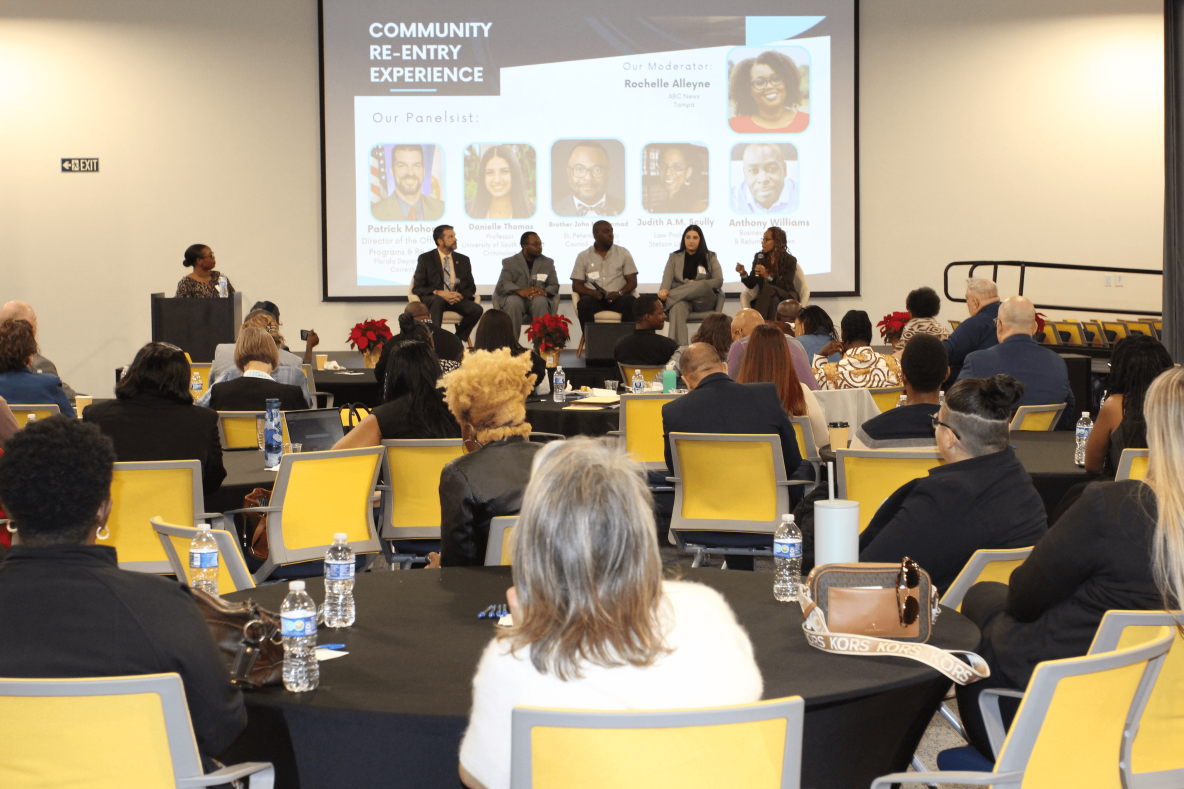
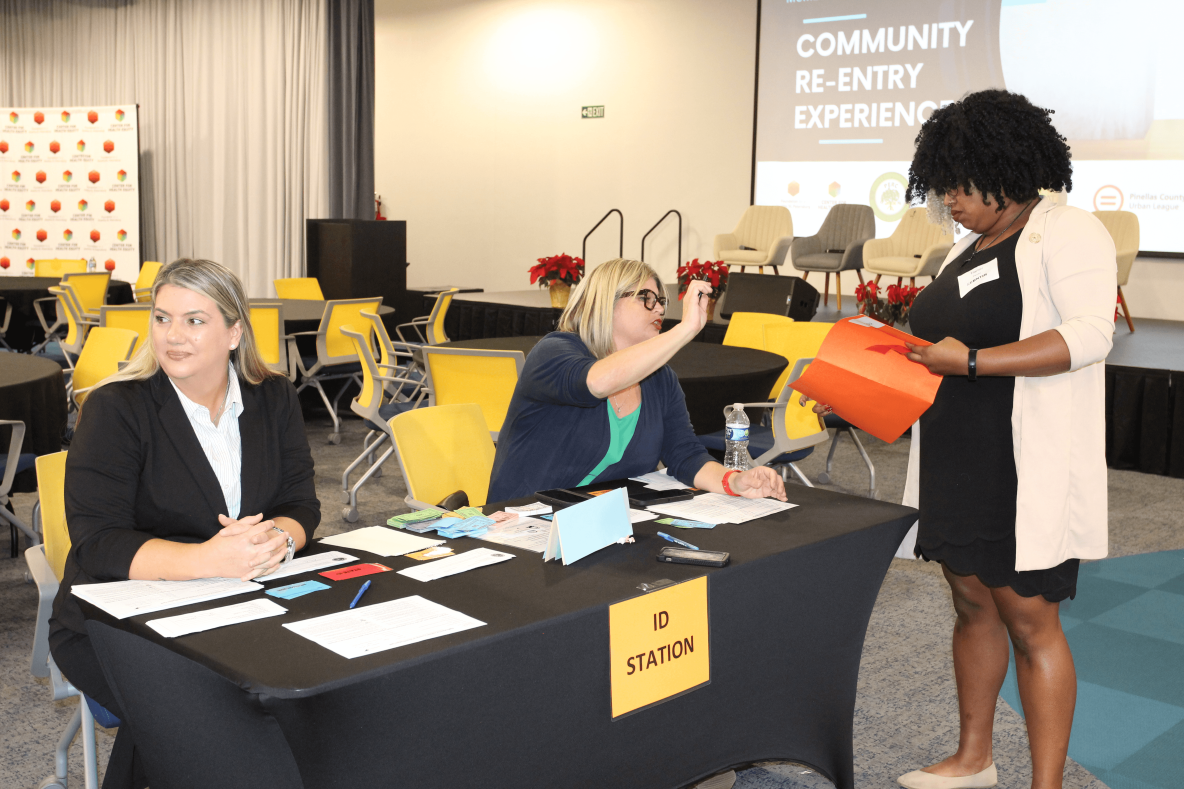
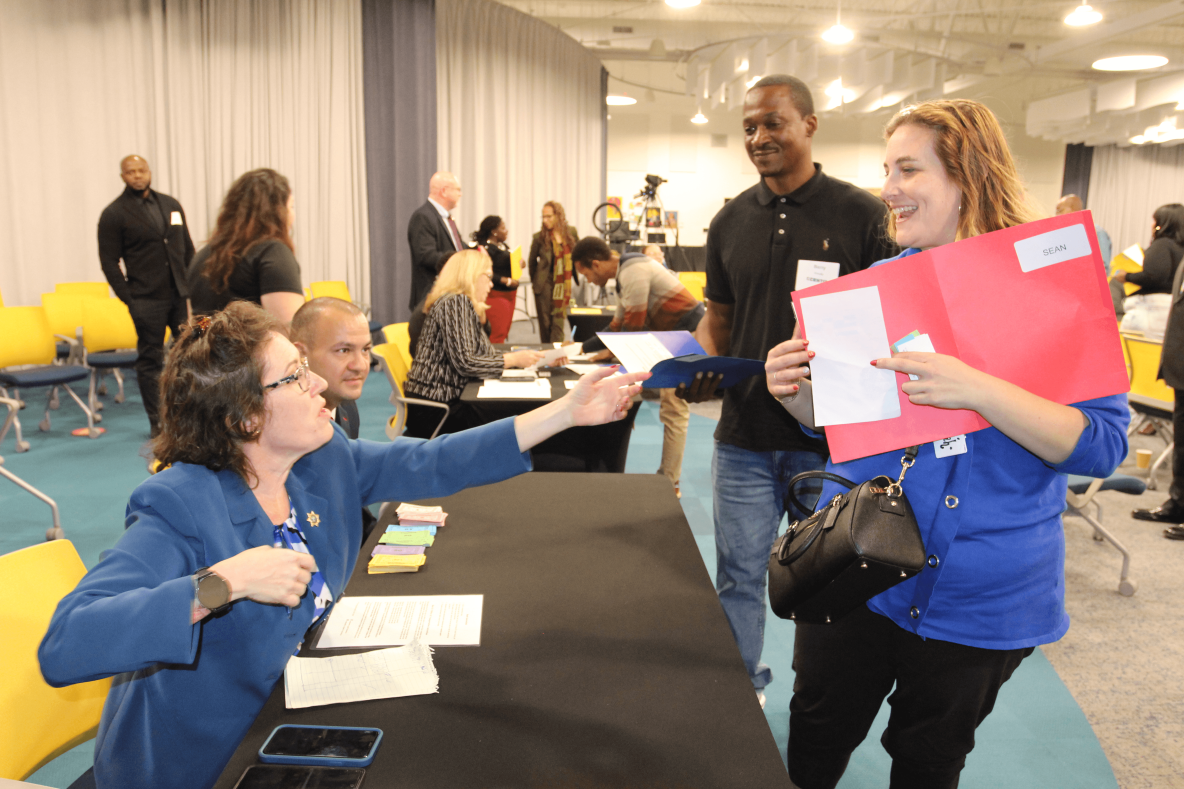
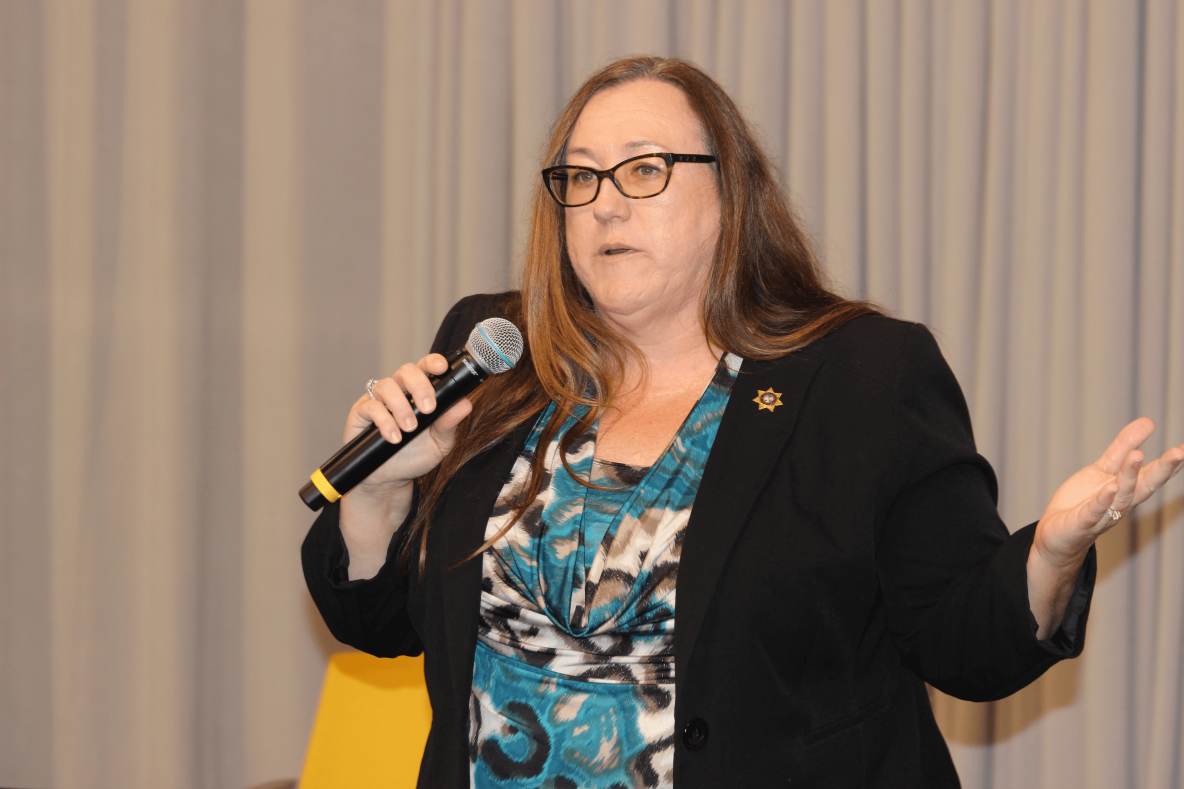
Be the first to comment